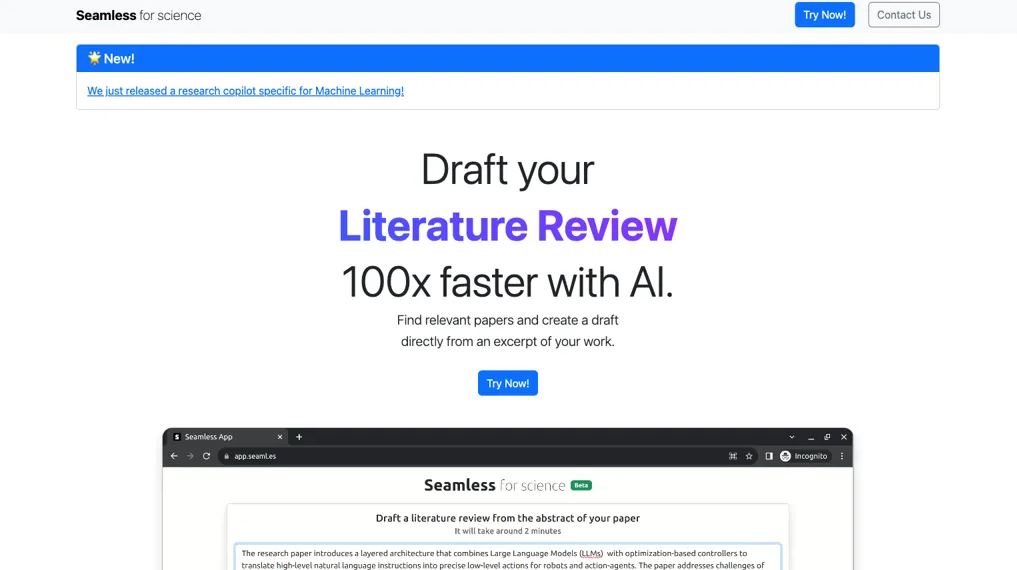In today’s academic and scientific landscape, time is one of the most precious commodities. With thousands of research papers published every day across various fields, staying up to date can feel like an insurmountable task. For researchers, students, and professionals alike, sifting through dense, jargon-filled articles is both time-consuming and mentally taxing. That’s where AI-powered scientific paper summarizers are changing the game. These tools distill the core messages of complex academic texts into digestible summaries, enabling faster understanding and better-informed decision-making. As the demand for efficiency grows, these intelligent tools are proving to be invaluable allies in modern research workflows.
The Growing Challenge of Information Overload
The sheer volume of academic publications being released daily poses a major challenge for those trying to stay current in their fields. Journals and repositories are brimming with studies—many of which are highly specialized or use complex methodologies—making it harder than ever to extract relevant findings quickly. Manually reading and analyzing each paper isn't just inefficient—it’s practically impossible at scale. Researchers often find themselves overwhelmed, potentially missing out on key developments simply because they don’t have the capacity to engage with everything in detail. This is where scientific summarization tools can step in to bridge the gap, helping users navigate the flood of information more effectively.
How AI Summarizers Understand and Condense Complex Content
AI summarizers use natural language processing and machine learning algorithms to process academic texts and extract essential information. These tools are trained on vast datasets of Scientific paper summarizer literature, allowing them to recognize patterns, identify important concepts, and condense lengthy papers into clear, concise summaries. More advanced summarizers can distinguish between background context, methodology, results, and conclusions—enabling users to focus on what truly matters. Some tools are even capable of highlighting key findings, suggesting future research directions, or offering simplified explanations for non-experts. This analytical capability makes them far superior to traditional abstract reading or skimming strategies.
Popular AI Tools Leading the Summarization Revolution
Several AI-powered summarization platforms have gained popularity among academics, each offering distinct advantages. Tools like SciSummary, Scholarcy, Explainpaper, and Semantic Scholar have become go-to resources for those seeking faster insights into complex studies. Scholarcy, for instance, creates detailed flashcards from academic papers, outlining key points and helping readers absorb content more efficiently. SciSummary offers ultra-concise summaries generated by AI models specifically trained on scientific texts. Explainpaper allows users to upload PDFs and then ask questions directly about the paper, receiving contextual explanations in plain language. These tools don't just save time—they empower users to understand unfamiliar or difficult material more confidently.
Bridging the Gap Between Experts and Novices
One of the most powerful impacts of AI summarization tools is their ability to make scientific knowledge more accessible. Academic writing is often opaque, filled with technical terms and domain-specific language that can alienate non-specialists. For undergraduate students, interdisciplinary researchers, or professionals venturing into new subject areas, deciphering these texts can be daunting. Summarizers offer a way to break down these barriers, providing simplified overviews without sacrificing accuracy. This democratization of knowledge helps foster interdisciplinary collaboration, supports lifelong learning, and encourages broader public engagement with science.
Enhancing Productivity in Research and Writing
By automating the initial stages of literature review, AI summarization tools significantly enhance productivity. Researchers can rapidly assess whether a paper is relevant to their study, identify patterns across multiple studies, or extract citations for further reading. For those working on dissertations, grant proposals, or academic publications, summarizers can be a valuable first step in organizing thoughts, framing arguments, and referencing the latest work. Instead of spending hours on background reading, scholars can focus more on analysis, synthesis, and critical thinking. Over time, this efficiency not only saves energy but improves the overall quality of scholarly output.
The Ethics and Limitations of Automated Summarization
While AI summarizers offer clear benefits, it’s important to recognize their limitations. Summarization algorithms can occasionally miss nuanced arguments or misinterpret context, especially in highly technical or ambiguous texts. Relying solely on summaries without reviewing the full paper can lead to oversights or misrepresentations of the original work. Moreover, ethical concerns arise when AI-generated content is used without proper attribution or critical verification. It's essential that users approach these tools as assistants rather than replacements for in-depth reading and understanding. Responsible use involves treating AI summaries as entry points rather than definitive interpretations of academic work.
Looking Ahead: The Future of AI in Academic Research
As AI technologies continue to evolve, the potential for even more sophisticated summarization tools is on the horizon. We may soon see platforms capable of multi-document synthesis—comparing and summarizing findings across numerous studies to highlight consensus or contradictions in the field. Integration with virtual research environments, voice-based querying, and real-time summarization are also likely developments. Additionally, enhanced personalization features may allow tools to tailor summaries based on a user’s academic background, preferred reading style, or research goals. In the future, AI will not just help people read faster—it may actively support the generation of new knowledge by surfacing insights that would otherwise remain buried in the literature.



